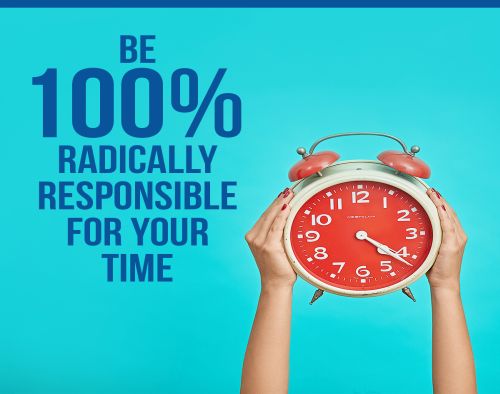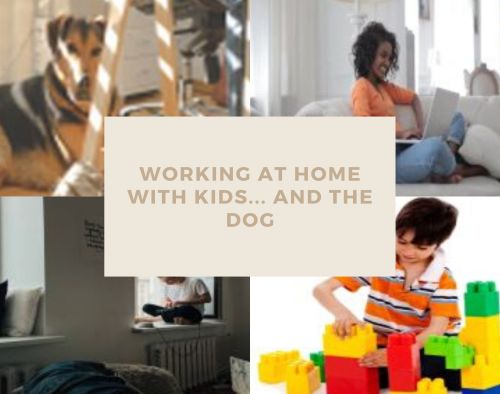The COVID-19 crisis has us all navigating our own unique challenges, routines are changing and many of our homes are turned into offices, much like back in the days of the cottage industry.
Nonetheless, whether you’re working from home due to being quarantined, or, by choice prior to being on lock down, it’s rewarding, if you keep your productivity up, maintain a healthy work-life balance, and nurture your business relationships.
Many of us solo/entrepreneurs know this, but truth be told, it takes mental effort. We have to figure out when to work, where to work, and how to create boundaries between work life and personal life.
Here’re my top tips based on my experience and what I’ve observed and learnt from other ‘work from home’ solo/entrepreneurs. Naturally, this is not set in stone, as there’re many variables to consider. So, use whichever tips that’ll best support you.
Test Which Times Works For You
 One of the pros about working from home is that you don’t have to punch a time clock at a particular time, unless you’re an employee, working remotely. As entrepreneurs, we get to break out of the traditional job mindset. We don’t show up to someone else’s business, clock in and do work in line with their plan and vision.
One of the pros about working from home is that you don’t have to punch a time clock at a particular time, unless you’re an employee, working remotely. As entrepreneurs, we get to break out of the traditional job mindset. We don’t show up to someone else’s business, clock in and do work in line with their plan and vision.
Our time is precious. We show up with our own vision and create a plan. We bring our experience, perspective, creativity and influence and get to work. This is true whether you’re a product creator, service provider, coach, consultant, speaker, author, blogger, podcaster, etc.
The value of your time doesn’t end there, though. It’s much more than that. It’s about the impact you have on those you serve. So, if you prefer to wake up early and get a jump start on your day at 6AM, you have that choice. Or, if you’re nocturnal and find that you’re productive when the lights come on, you obviously have that choice, too, and I say go with that energy to make the impact you desire.
Of course, there’re some remote jobs where you’ll need to have more of a set schedule (customer support comes to mind), and you’ll likely have meetings to attend at times that fits in with the team, but outside of those commitments, you can usually set your schedule to work for you during your most productive times.
The ROWE Mindset
Here’s a different way of looking at work that you could adapt. The Results-Only Work Environment (ROWE™️) is a globally proven, contemporary management strategy that focuses attention solely on measurable results. Many successful entrepreneurs encourage using this method, because it helps remove concerns managers may have around employee timekeeping and productivity.
By focusing on goals and metrics, the old-school idea of how much time you should sit at a desk is outdated, according to, co-creators, Jody Thompson and Cali Ressler:
‘For over a decade, hundreds of teams across the globe have made the choice to radically differentiate themselves from the status quo. The 20th century management playbook is out of date, outmoded and out to lunch. Contemporary business is leaving behind flavor-of-the-month programs that promise to improve worker motivation like ‘open workspaces’ and the ‘four-day workweek’. The Results-Only Work Environment offers a truly remarkable mindset shift….’
Work You vs. Home You
 Your goals will be to be productive within your work environment, be present, and free (from work) in your personal life. But how do you separate the two? Well, there must be a ‘work’ you and ‘home’ you.
Your goals will be to be productive within your work environment, be present, and free (from work) in your personal life. But how do you separate the two? Well, there must be a ‘work’ you and ‘home’ you.
Even though both ‘yous’ occupy the same body, and now the same building, they must be kept apart if both of ‘you’ are going to make it through this.
I know, a bit of a tongue twister, but each can potentially impact the other negatively, if not kept in their respective corners of the building, so take heed.
As I write this, there’re a gazillion blog posts being published with advice on what the ideal home office should look like, due to many people being on lock down and having to work from home. This post, however, isn’t about standing desks, although my research shows that it’s highly recommended.
Nevertheless, here’s what’s the most important factor about the home, workspace, based on my 10+ years of experience.
It’s a separate space. It’s invaluable — not just to your productivity, but to your mental health — to keep a (somewhat) physical barrier between work and home.
The best way to prevent a potentially harmful subconscious association between your home and your work is to keep them apart in your head, which starts with keeping them apart in real life.
Of course, not everyone has the facility to create their dream home office. If you have a spare bedroom, a big enough walk-in closet, a garage with outlets, anything, use it. If you don’t… get creative.
Wherever you choose, block it off with as much of a physical barrier as possible. Folding screens are a good option, but even if you don’t have any way to ‘block’ the workspace from the living space, you absolutely must define a workspace.
Something as simple as a wall hanging can represent the ‘border’ between your home office and the living space. Whatever the ‘border’ is, however symbolic, ensure it’s there.
Symbolism can actually be the most important aspect. The barrier has to be firm in your head, even if it’s barely there physically.
Sound a little woo-woo? A little pop-psych? Go with it. It works. By setting up a barrier, you’re addressing the number one challenge we all face: changing your mindset.
Mindset is what will enable you to work on your business, even though you’re steps away from your favorite distractions, hello TV!
Eliminate Chaos By Maintaining The Barrier Between Work And Home
 When you’re in the workspace, you’re there to work. It just won’t do to have the kids, friends of your kids, spouse, dogs, and even neighbors come in and out.
When you’re in the workspace, you’re there to work. It just won’t do to have the kids, friends of your kids, spouse, dogs, and even neighbors come in and out.
Have a conversation with everyone in your household and ask them to respect your boundaries; to treat your home office like an actual office; you know that place where they wouldn’t barge into unless there was an emergency. It’s unlikely that they wouldn’t be supportive.
Naturally, this goes both ways. Don’t take your work into your home space, either. No working on your laptop while sitting on the sofa with your family. No conference calls from the bed. And please, no listening to LIVE webinars while on the loo (I can’t emphasize that one strongly enough). I can tell you some stories but, that’s for another post.
Still, time is just as crucial as space when it comes to the psychological border between work and home. Think of it as not only protecting the time you devote to work, but also as manning the gates of your personal and family time.
Don’t let work steal time from your life, and vice versa. Understand that setting up a barrier and boundaries protects all concerned. Here’re some suggestions to help you manage your time effectively:
Schedule Everything
Because there’s no greater stress reliever than having your workday plotted out. You get to relax (and sleep!) knowing that you’ll handle whatever needs handling, because it’s in the schedule. You’ll be amazed at how calming this is.
It’s common advice to write down things that stresses you out, especially before bed, as a means of de-stressing. There’s something about the act of transferring our thoughts on to paper that compartmentalizes them — especially when that paper is an action plan.
Scheduling helps free your mind from work during your ‘home’ time.
Work In Bursts
A great productivity book by Cal Newport, Deep Work: Rules for Focused Success in a Distracted World, recommends 60 to 90-minute bursts of focused, un-distracted work, with breaks in between.
I apply this system when I work on whatever project I scheduled, for 60-minutes (90-minutes if I’m laser coaching) of intense, laser focused work, I then take15 minutes break, make a cuppa tea, do some steps, maybe jog on the spot and breathe.
Then I get back to my schedule and repeat for the amount of time I allotted. By the way, studies of office productivity showed that in 8 hour ‘workdays,’ people typically do as little as 2 or 3 hours of actual, fully focused, productive work.
Surprised? I was, too. However, when you use the burst/break system, it’s a lot like a High Intensity Interval Training (HIIT) workout. The breaks let you increase output during the bursts, resulting in higher productivity. Your brain is no different from the rest of your body in this way; just as muscular or cardiovascular development depends largely on recovery periods, so, too, does focus.
Don’t Multitask
 Just don’t. Well, unless it’s mundane tasks, such as washing the dishes and chatting on the phone. However, the same is not true for focused work, your brain does its best work when you focus on one thing at a time.
Just don’t. Well, unless it’s mundane tasks, such as washing the dishes and chatting on the phone. However, the same is not true for focused work, your brain does its best work when you focus on one thing at a time.
Easier said than done, but you’ll be productive when you put singular focus on each task for its allotted time. That’s block-scheduling, so you’re only doing a single task in a set time period in a day. In other words, one track minds are a good thing in this area.
Deep Work and Nir Eyal’s book Indistractable: How to Control Your Attention and Choose Your Life. dive into the psychology, but the gist is that switching tracks exhausts mental energy, creates friction, and leaves you less productive. It’s an illusion that multitasking gets more done. In reality, you’re don’t. You’re just exerting yourself unnecessarily by keeping busy.
Schedule Important And Creative Work First
Always schedule important tasks first. Once they’re completed, go on to creatively demanding tasks next. When your mind is fresh, you’re at your most rested and energetic, you’ll have the mental energy to handle brain-heavy tasks.
You’ll be surprised how efficiently you’ll get through about 80% of your important work in a short space of time. Leave the menial tasks (checking or, responding to emails, checking social media, or data entry) for later.
Group Meetings
Group your meetings and appointments with short breaks in between. Doing so will leave you with longer stretches of uninterrupted time to actually get your work done.
If you take an hour break between meetings and appointments, you won’t have a solid hour to work, as you’ll likely want to refill your tea, or, coffee mug, grab a snack, take a bathroom break, maybe go for a walk (if you’re like me, you’ll want to get your daily 10K steps in), and, well, you’ll be left with half hour in your ‘hour,’ if that long.’
Instead, group meetings and appointments back-to-back and you’ll be uninterrupted when you do get to work.
Productivity Playlist
Opinions vary on the value or detriments of listening to music while working. I don’t personally find music focus-inducing. However, depending on what I’m working on, I can listen to music, whereas, you may not be able to focus unless you have absolute silence.
The important thing is to check in. Is your mind drifting away with that classical symphony, or those ocean sounds? Or, is it just enough to ease you into a flow state, where background distractions fade away and your mind becomes hyper-focused on the task in hand?
If you’re pro-music, https://brain.fm has functional music said to improve focus in 15 minutes. Also, you could check out a few Spotify playlists, featuring music that’s interesting, but not distracting:
Schedule Your ‘To Do’ Every Day For The Next Day
The goal is not to think about work after work. This is why the last thing you’re recommended to do after you finish work each day is schedule the next day’s tasks. At a bare minimum, write down the 3 most important things you must get done, or continue to work on, and schedule them for your peak times.
Whilst this seems restrictive and hardly worthwhile, it’s mentally liberating. By scheduling them, you know exactly what to start on when you return to your workspace; you’ve set the intention and you’ll get immense satisfaction ticking them off after completion.
Working At Home With Kids… And The Dog
 Working from home isn’t novel. Working from home while your kids are off school…well, that’s a challenge. Nonetheless, as mentioned above, it’s crucial that everyone in your household know where the boundary is between work and home. That includes the kids.
Working from home isn’t novel. Working from home while your kids are off school…well, that’s a challenge. Nonetheless, as mentioned above, it’s crucial that everyone in your household know where the boundary is between work and home. That includes the kids.
Even if you need to keep an eye on them, remind them not to cross the ‘border’ into your workspace. In saying that, the key thing to remember is that kids can’t focus for too long on anything. As any classroom teacher will tell you, no one under a certain age can reasonably be subjected to hours of focused activity, so it’s vital to break things up.
Consider using half-hour activities, with the goal of completing a certain number of them in tune with your kids’ natural rhythms. Work on a segment, then go run around for a bit, play with them…. It’s similar to the method of focused bursts interspersed with breaks, only with much shorter units of time.
Don’t forget the value of freedom for children. Studies have shown the benefits of independent play, learning, and exploration. Even in today’s classrooms, teachers are encouraged to be the ‘guide on the side,’ rather than the ‘sage on the stage.’ Embrace that.
In other words, the ‘sit there while I lecture’ model has been obsolete for a long time, replaced by an environment for kids to explore, experiment and engage independently.
It’s worth investing a little time and energy into creating a stable, healthy, sustainable work from home (WFH) situation. The benefits are rewarding.
Cherry-Ann Carew is an Online Business Coach, who supports emerging business owners simplify their start-up journey and helps existing businesses scale, so that they can earn uncapped income and live life on their terms.
PS. I’d love to hear your experience on working from home, or if you have a tip or two to add, do share below.

